“X” Marked The Spot – Documentary Filmmaker Nancy Buirski On ‘Midnight Cowboy’s Enduring Impact And How It Got That Risqué Rating
- Oops!Something went wrong.Please try again later.
- Oops!Something went wrong.Please try again later.
- Oops!Something went wrong.Please try again later.
- Oops!Something went wrong.Please try again later.
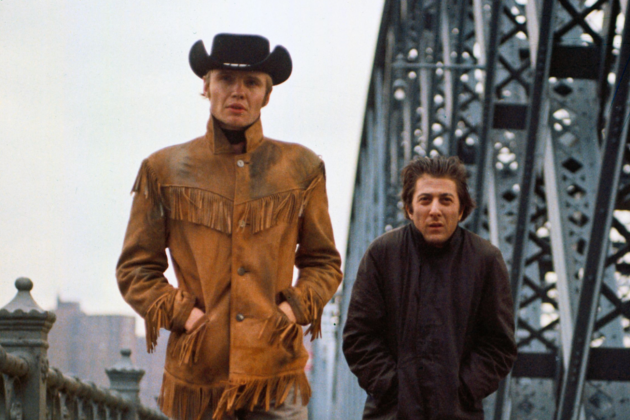
When Midnight Cowboy came out in 1969, Miami Herald critic John Huddy heralded its arrival with a string of superlatives: “Staggering, shattering, heartbreaking, hilarious, tragic, raw and absurd.”
Over the years, the ranks of its admirers has only grown, among them documentary filmmaker Nancy Buirski.
More from Deadline
“I remember feeling that it was a really radical film,” recalls Buirski, who first saw Midnight Cowboy sometime after its original release. “It felt different from anything I had seen… It was like a gut punch.”
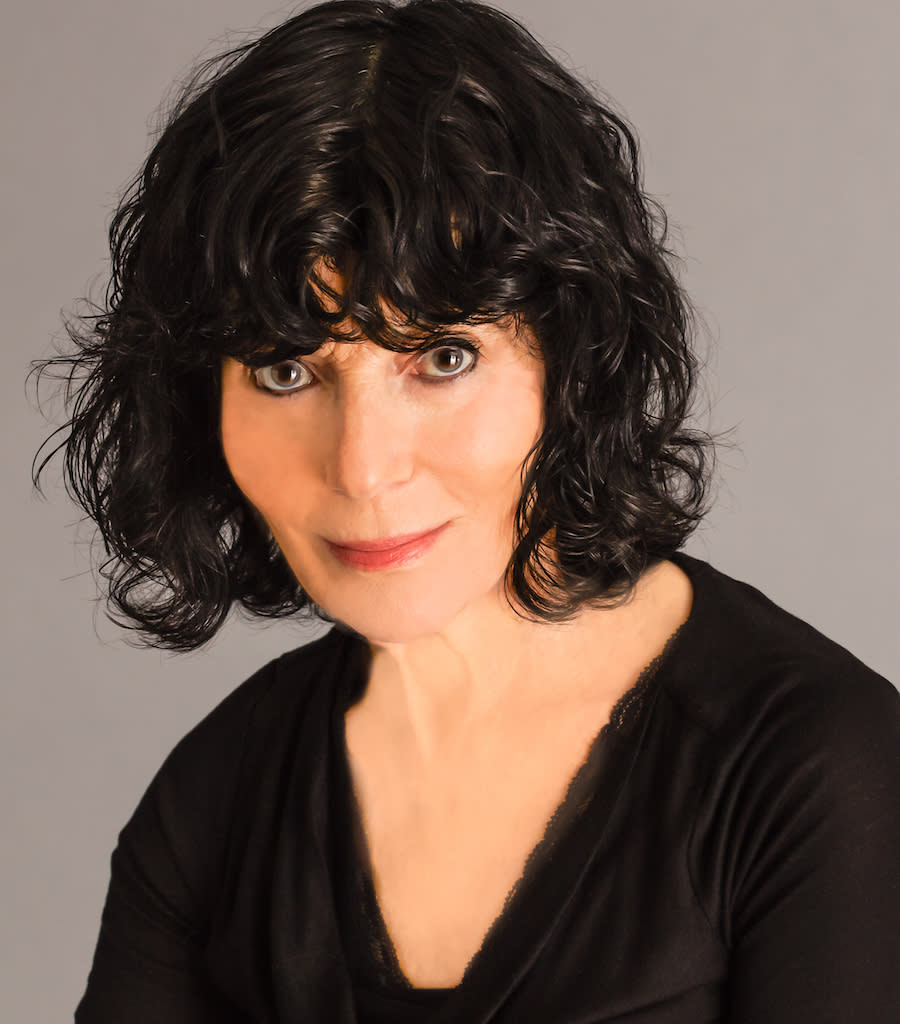
Buirski’s documentary Desperate Souls, Dark City and the Legend of Midnight Cowboy, now playing in limited release in New York, Los Angeles, Santa Barbara, Detroit and other cities, digs into the loam that produced such a bleak yet beautiful flower of a film. Midnight Cowboy hit theaters the same year as Hello, Dolly! and Paint Your Wagon but unlike those celluloid larks, John Schlesinger’s film dared to offer a story embedded in a gritty American reality — Joe Buck, a Texas would-be gigolo newly arrived in New York, intent on selling his body to “rich ladies,” and the bond he eventually forms with a dodgy down-and-outer, the consumptive Ratso Rizzo.
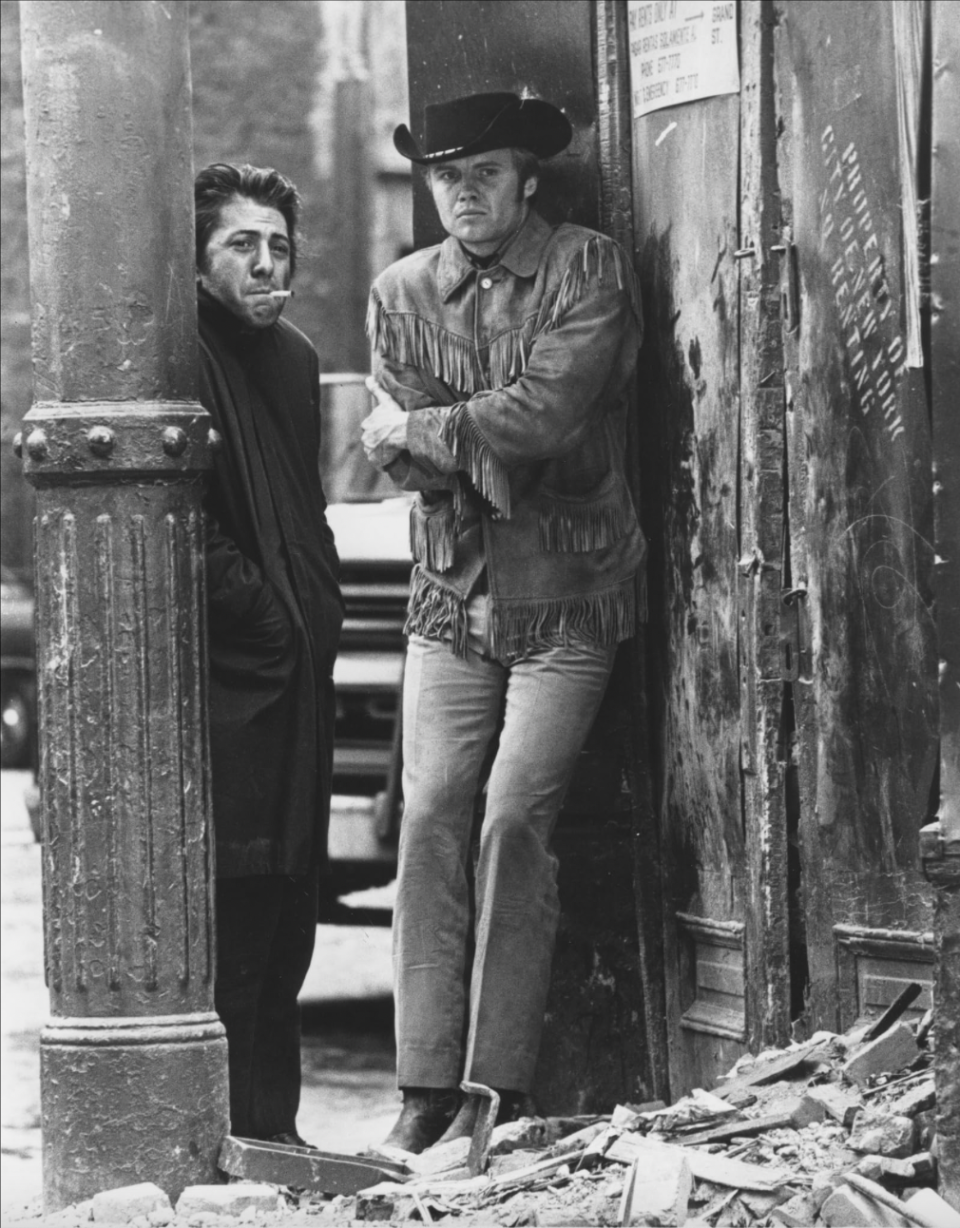
“It has to be the right time, it has to be the right place, it has to be the right person,” observes Ian Buruma, Schlesinger’s nephew, about the alloy of circumstances necessary to create a classic. “Midnight Cowboy came at a time and in a place when there was a huge ferment, artistic ferment, in the theater and elsewhere – in film… And we’re lucky that he was there, [screenwriter] Waldo Salt was there, Dustin Hoffman was there, Jon Voight was there.”
The source material was the 1965 novel Midnight Cowboy by James Leo Herlihy, an openly gay American writer. In the hands of Salt and Schlesinger — the gay, British, and Jewish director — the film somehow channeled the deep discontents threatening to pull apart American society.
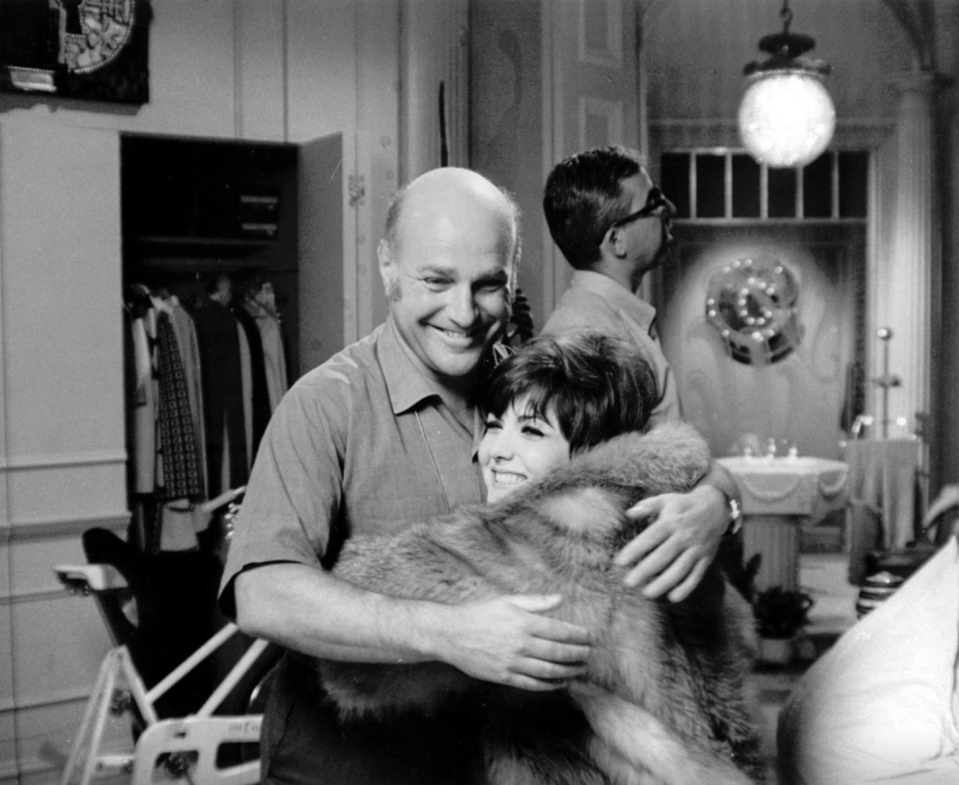
“John Schlesinger understood… He got what was going on in the culture and what was affecting us,” Buirski tells Deadline. “I think he was as genuinely affected by it himself, so he was throwing it back at us, actually. So, he wasn’t making a film about Vietnam, he wasn’t making a film about gay rights. He wasn’t making a film about any of those things, but he was feeling the turbulence in the air. He was feeling the disruption.”
Midnight Cowboy was no studio confection shot on a soundstage. Schlesinger filmed on location in Texas and in a New York approaching its nadir of crime, decay, and bankruptcy. The movie contains moments of nudity – including a sequence helpfully described by IMDb’s Parents Guide as depicting “a fully nude man thrusting on top of a woman. His clinching butt is seen briefly.”
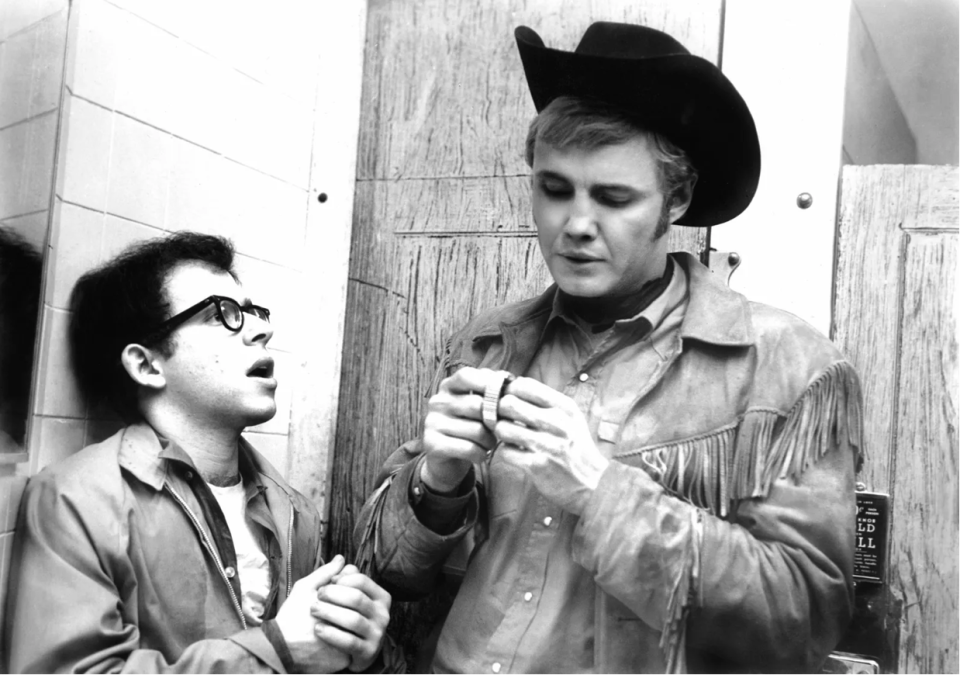
More shocking for a 1969 audience, the movie opened a lens onto underground gay life (Midnight Cowboy premiered in theaters a month before the Stonewall Uprising that ignited the modern gay rights movement). Some of Joe Buck’s customers are men hungry for sex. In one scene a high school kid — played by Bob Balaban in his first movie role – “gives [Buck] a blow job in the balcony of a sleazy Times Square movie theater (the sex takes place just off camera),” as described in Glenn Frankel’s Shooting Midnight Cowboy: Art, Sex, Loneliness, Liberation, and the Making of a Dark Classic, a 2021 book that inspired Buirski’s film.
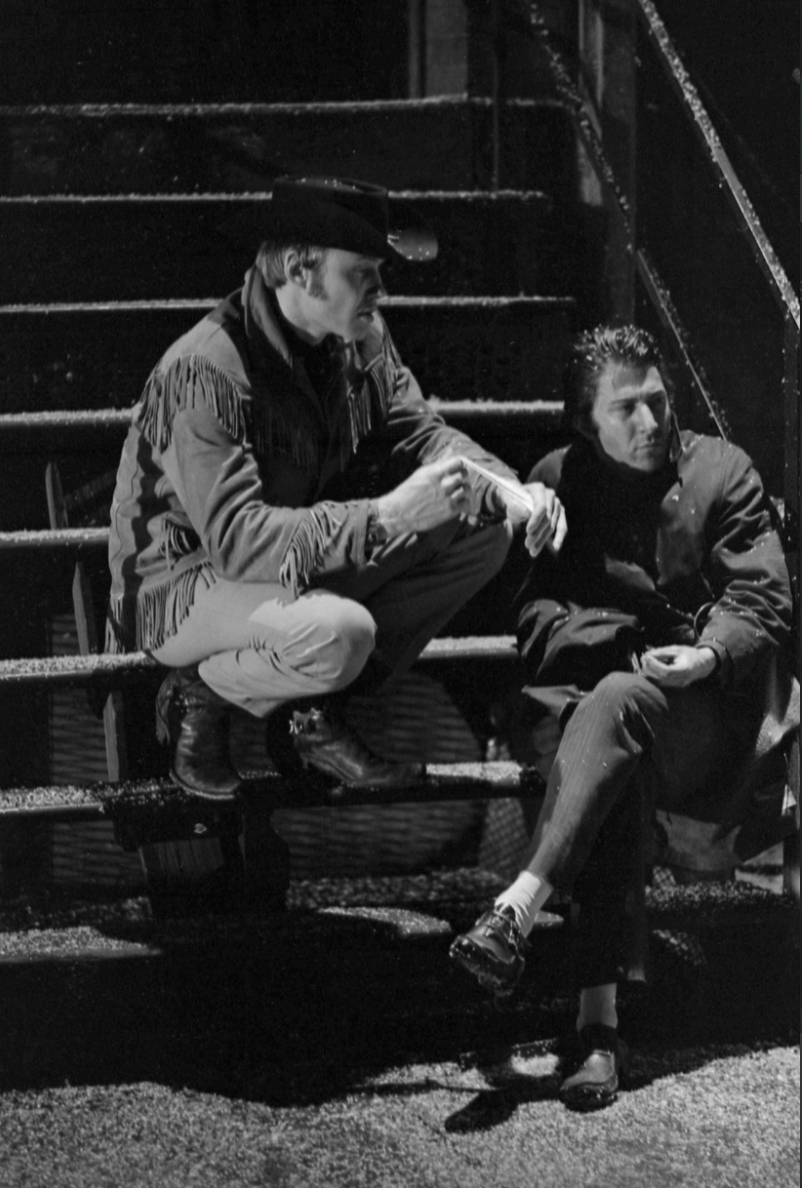
That content famously earned Midnight Cowboy an “X” rating. It went on to become the first X-rated movie to win the Academy Award for Best Picture (and presumably the last, because the classification no longer exists among MPA ratings). But Buirski’s film explains the surprising story about how the film got its “X.” United Artists, the studio behind the film, requested it.
“Because they were in a climate where homosexuality was still against the law,” Buirski notes. “And some psychiatrists, who we actually have in the film, said to the producers — Arthur Krim [chairman of United Artists], in particular — that this was a ‘gay-friendly’ movie, and that it would influence vulnerable young people to ‘cross over the fence…’ I guess they were protecting the movie. They were saying, ‘We don’t want people coming after us and telling us we’re responsible for damaging these people’s souls,’ when in fact, none of that was happening. That was nonsense in the first place.”
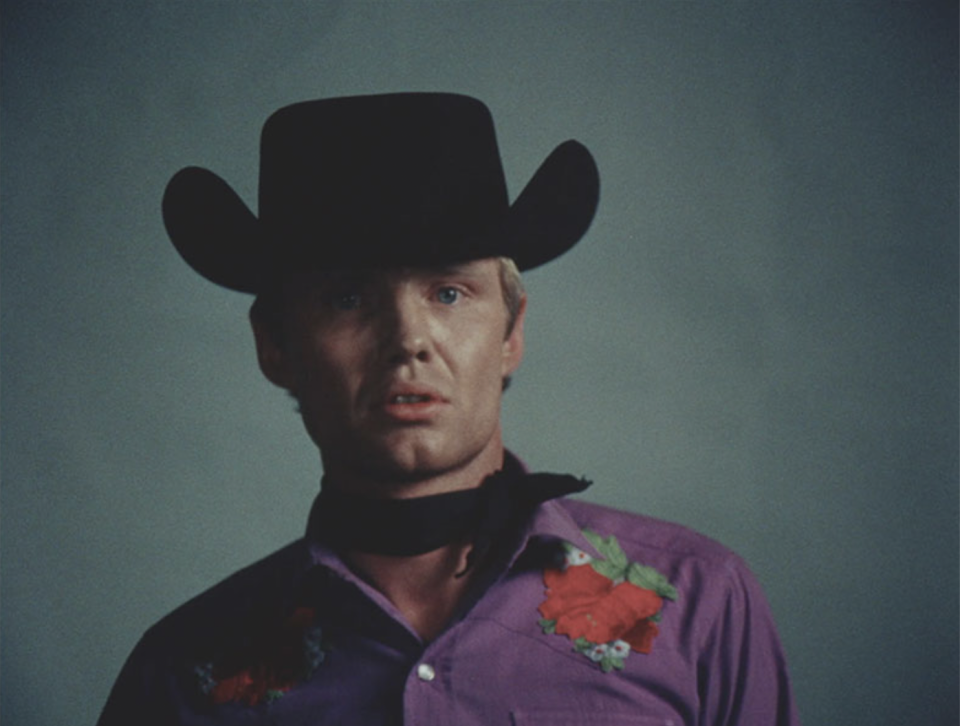
Desperate Souls, Dark City begins with a riveting anecdote from Voight, now 84, recalling a conversation he had with Schlesinger on the final day of shooting. The actor remembers Schlesinger being overwhelmed with misgivings, telling him, “What have we done! We’ve made a movie about a dishwasher who goes and f**ks a lot of women in New York. What’ll they say? What’ll they say about this picture?” Voight says he assured the director, “We will live the rest of our lives in the shadow of this masterpiece.”
Buirski says she began the film with Voight’s poignant recollection because “it was really important for us to put the stakes out there pretty quickly, to remind people that not only the film did really well, and it was a masterpiece, but also to remind people how risky it was.”
Readers of Frankel’s book will know Voight wasn’t Schlesinger’s first choice for Joe Buck. Warren Beatty, Robert Redford, and Tab Hunter were all keen on the role, but it was originally offered to Québec-born actor Michael Sarrazin. Kiel Martin (later to play J.D. LaRue on Hill Street Blues) also was in the running to play the title character. As for the role of Ratso Rizzo, Hoffman had to lobby for that part. But Buirski’s documentary isn’t a “making of” exercise.
“People often ask me why I went to the trouble to make this film about the moment as compared to the ‘making of,’” Buirski acknowledges. “I think sometimes the ‘making of’ can be a little boring.”
The emphasis here is on the cultural context and momentous influence of Midnight Cowboy. As Peter Biskind, author of Raging Bulls Easy Riders: How the Sex-Drugs-And Rock n’ Roll Generation Saved Hollywood, has noted, Midnight Cowboy launched an era of auteur-driven films that captivated the public and defined their time. Buirski’s film draws a link between Midnight Cowboy and an even darker, more dystopian New York picture, Taxi Driver, Martin Scorsese’s 1976 film, starring Robert De Niro as the frighteningly intense and homicidal Travis Bickle.
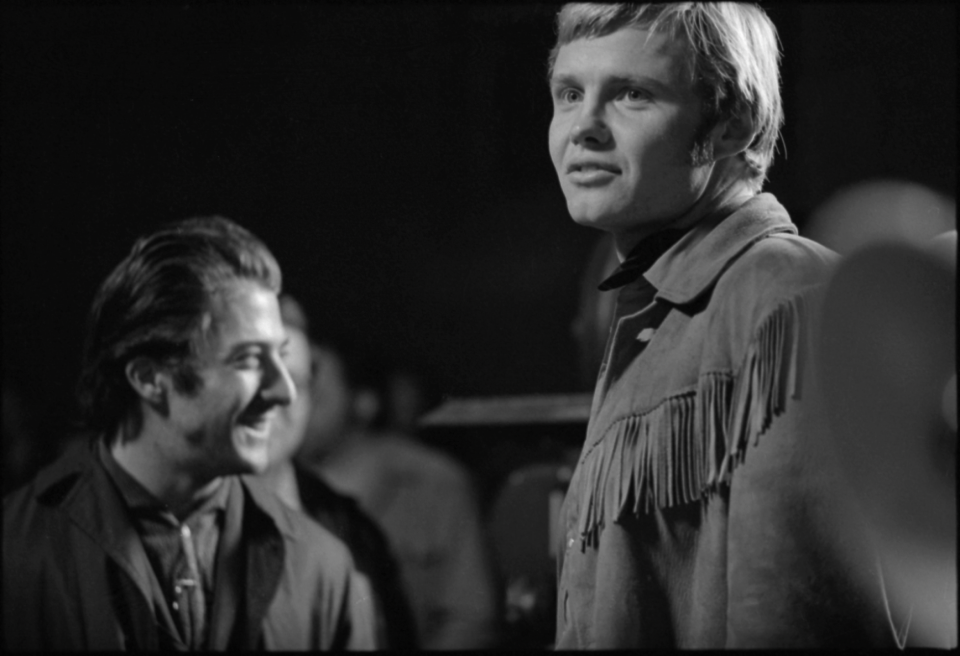
“The two characters in Midnight Cowboy are, in a peculiar way, more relatable [than Bickle],” Buirski notes. “Joe Buck, who’s a hustler is also a kind of dopey guy, and naive. And, Ratso definitely has humor, which is Dustin Hoffman’s great performance. But I think the actual observation of the city [in Taxi Driver] and dealing with the authenticity of what that city looked like then, I think it’s a direct line to Midnight Cowboy.”
Desperate Souls, Dark City and the Legend of Midnight Cowboy is produced by Buirski, Simon Kilmurry, and Susan Margolin. It premiered at the Venice Film Festival last September before heading to Telluride. It’s now playing at Film Forum in New York, where the film team has participated in Q&As.
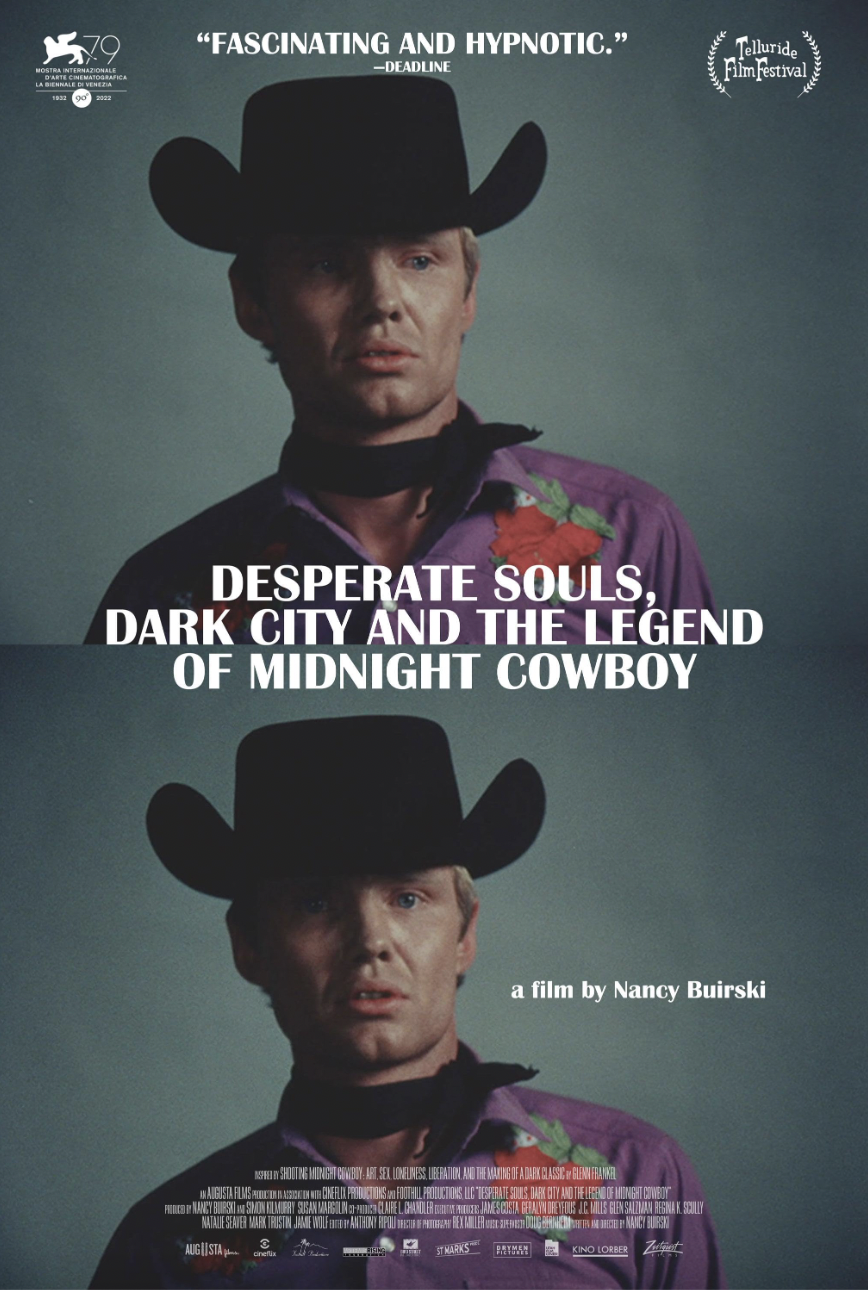
“Honestly, I was nervous about opening in New York,” Buirski says. “We had traveled quite a bit with it before, but New York owns Midnight Cowboy, New Yorkers feel an ownership of Midnight Cowboy. I could have disappointed them a lot, but I haven’t. And they’ve been fantastic. We’re at the Film Forum and those audiences have been packed and they clap during it, and they laugh during it, and they really get it.”
The documentary illuminates a time before multiplexes, before cable TV, streaming and video games – in other words, a time when a movie could dramatically affect the culture, as Midnight Cowboy did. Can any film of today produce a cultural tsunami of that magnitude? My own view is no – we are too fragmented, our collective attention too divided to allow for such a thing. And, arguably, we’re not at the point of a tectonic shift in culture as we were in the late 1960s. In the same way that there can never be another Beatles, there will never be another Midnight Cowboy, Easy Rider, Harold & Maude, Last Tango in Paris, A Clockwork Orange, in terms of cultural impact.
Buirski brings nuance and a somewhat more optimistic perspective to that question.
“The kinds of films you’re referring to are films that people took ownership of, they had such a personal connection to it. A Thousand Clowns is one that came up recently because we were talking about those kinds of movies,” she says. “I didn’t really connect with A Thousand Clowns as much as I connected to Midnight Cowboy. So, it all depended on where you were in your life. I think, today, we have so many fine independent films with some very powerful messages, there’s almost too much to choose from and connect to… It’s all so personal, it really is. But I think that there’s a lot of good stuff out there.”
Best of Deadline
Hollywood & Media Deaths In 2023: Photo Gallery & Obituaries
2023 Premiere Dates For New & Returning Series On Broadcast, Cable & Streaming
Sign up for Deadline's Newsletter. For the latest news, follow us on Facebook, Twitter, and Instagram.

